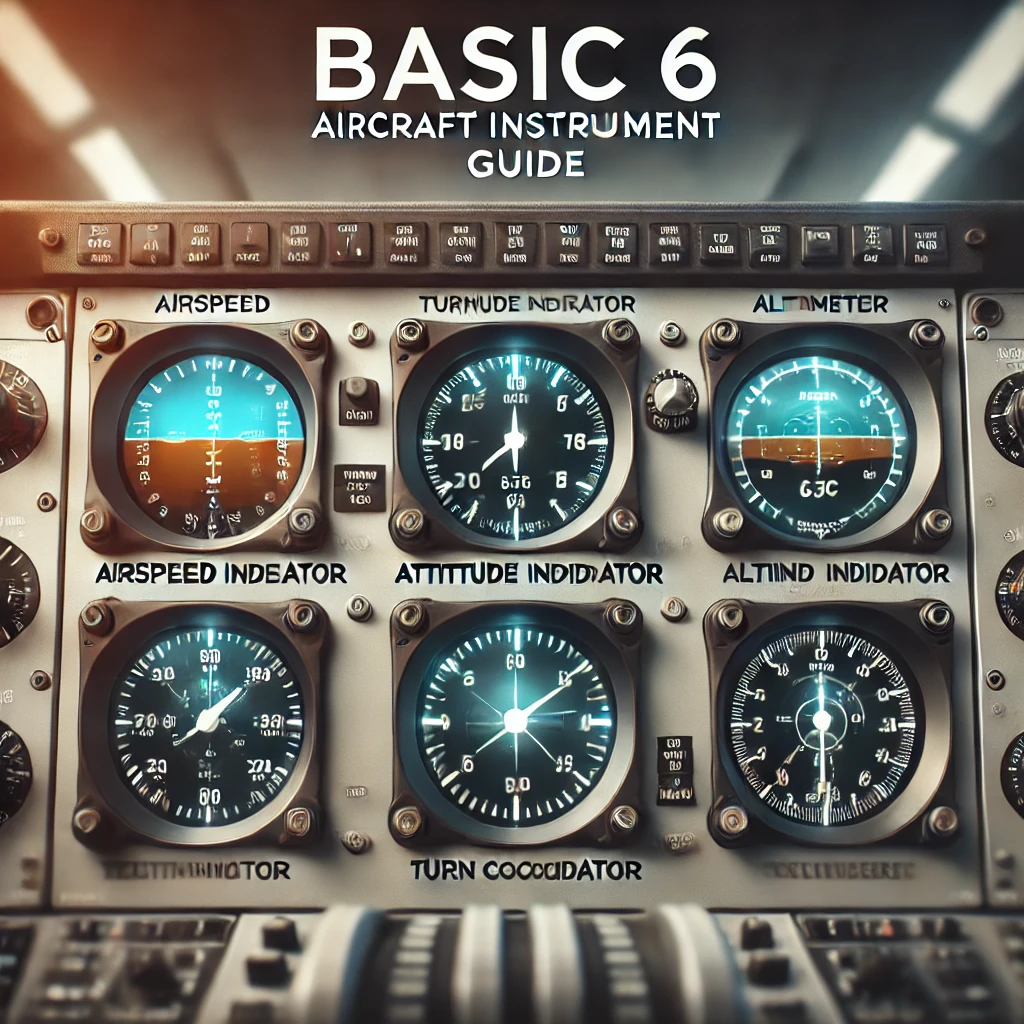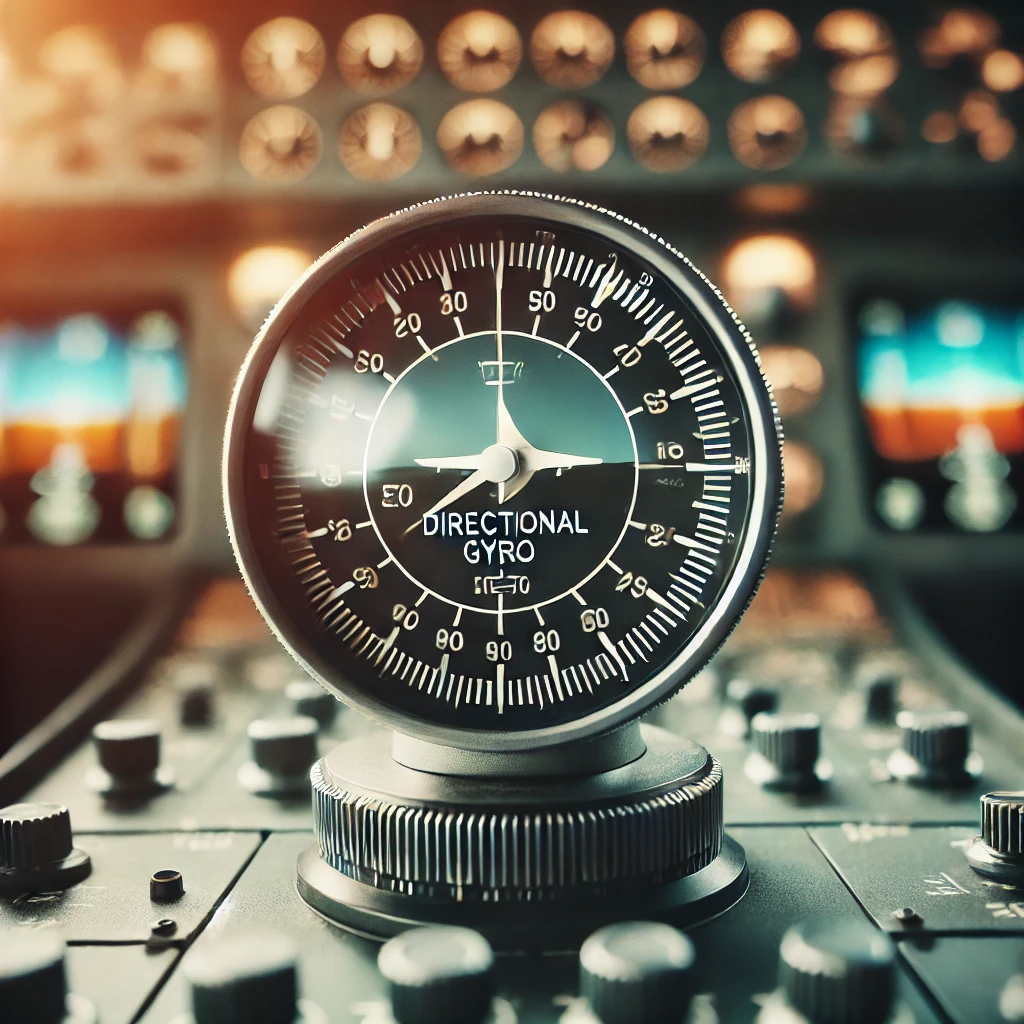In the extensive depths of the sky, where every millisecond pertains to a race, and attention is the highest currency, a pilot depends on many aids and not only on their skills and experience but on the tailored multitude of instruments that tell them all they wish to know about their aircraft’s or usage performance.
Imagine attempting to fly above the clouds with nothing else to rely on but your instincts, no radar, and no altimeter; it’s doomed to fail! Aviation is a field that necessitates utmost safety measures throughout every aspect of design and operation. In this blog post, we will delve deeper into the crux of aviation safety by vividly describing 6 critical instruments that work as an aircraft’s lifeline.
These instruments defend the order from total chaos in our aerial playground by attending to the multitude of issues ranging from altitude measurement through correct navigation to speed measurement and control. Fasten your seatbelts as we examine how these tools act in unison to ensure that the pilots and passengers remain unscathed and well-informed about how safe it is to travel within the skies.
Introduction to the Importance of Aircraft Instruments in Aviation Safety
As far as aviation is concerned, safety comes first. Every flight is dependent on a sophisticated set of control mechanism and navigation, and all of that begins with aircraft instruments.
These instruments play an indispensable role in ensuring the safety of aircraft during takeoff and landing because the provided information contributes towards the right decision being made in real-time. From altimeters to airspeed indicators, each instrument is crucial in guaranteeing that every takeoff and landing is secure.
Leveraging the power of imagination, picture yourself gliding through the clouds or staring at the vast land below. The only thing connecting you to reality is these small devices in front of you. With the power of imagination, we can easily comprehend the importance of acquiring knowledge regarding various aircraft tools not just for veteran aviators but also for neophytes preparing for a solo.
It’s time to strap in and examine familiar matters with fresh perspectives and understanding as we dive into exploring the six most important pieces of aircraft equipment that ensures safety in aviation.
The Six Critical Aircraft Instruments:
Knowing where the important instruments are in the aircraft will help better your flying experience. The responding data will guarantee proper safety measures and allow you to properly navigate without crashing and causing an unfortunate accident. The vital equipment will also allow you to fly freely without aggravating any of the airspace restrictions unlike other basic aircrafts where having these vital pieces of equipment are a must.
One of the tools used in measuring the altitude by air pressure is the altimeter. The rest of the aircraft tools will also play a major part in guiding you with the right instrument like the airspeed indicator which depicts with the aircraft’s speed in motion. Understanding the importance of this device will give ease knowing that during critical stages like stall or over speeding, the device is invaluable.
The attitude indicator shows whether or not an airplane’s wings are level in relation to the horizon. It is extremely useful in situations with low visibility.
The heading indicator is also important and it shows the direction of flight. Knowing the direction helps in navigating properly throughout a given journey.
The vertical speed indicator is another important component as it provides information on how fast an airplane is climbing or descending in real time. This information is vital during the climbing and landing phases.
Finally, the turn coordinator aids in monitoring turns while flying. This is important as it helps to ensure a coordinated flight. Having all these instruments makes aviation relatively safe and easy.
Altimeter
The altimeter is crucial for every aircraft as it measures the altitude above sea level. It does this through detecting changes in air pressure. The air pressure drops as the aircraft climbs. The data is transformed into altitude by the altimeter.
Pilots need to get the right altitude readings for several reasons. If the altimeter is read incorrectly, an aircraft may be too high or low which may cause potential collisions with other aircraft. This becomes a necessity during takeoff and landing for maximum precision.
Barometric and GPS-based altimeters are the two main types. Calibration is necessary for barometric altimeters, while GPS-based ones do not require this but need satellite signal to function.
An untrustworthy or defective altimeter can have dire consequences, such as controlled flight into terrain (CFIT). This underscores the necessity of this tool in aviation. Regular checks and calibrations, though frequent, lessen these risks.
Airspeed Indicator
The airspeed indicator is one of the crucial aircraft instruments that determines how fast an aircraft is moving in relationship to the air outside. It serves a very important function, as it helps pilots evaluate their performance during different stages of flight.
The aircraft has an exterior pitot tube fitted to it. This tube is able to sense dynamic pressure and it makes this instrument work. If the air is able to flow into the tube, then it creates a certain amount of pressure which will be shown on the gauge.
Airspeed is very important to a pilot in maintaining a set course of action while avoiding other dangerous situations such as stalling and over speeding. There are other speeds marked for easy reference such as indicative stall spew and maximum operating limits.
Pilots become intimate with airspeed when they have to maneuver through turbulence or change altitude. This information becomes especially important when a pilot is trying to navigate during take off and landing, as control during these periods is critical.
Attitude Indicator
One of the most important pieces of equipment in the cockpit is the attitude indicator that relays essential information to the pilot. It indicates whether the wings are level or whether the airplane is currently climbing or descending.
This instrument has a miniature airplane symbol which moves above the colored background mimicking the color of the sky and ground. While flying, accurate maintenance of one’s attitude aids in averting dangerous situations such as stalls and uncontrolled descents.
It is especially useful during low visibility conditions, when the pilot is depended on the instrument. The pilot must ensure that he or she interprets the readings accurately to guarantee safe movements, and maintain spatial awareness.
Learning to read an attitude indicator properly and cautiously is critical. It’s not just about interacting with the control, but acting in a way that makes sure everyone stays safe while in the sky.
Heading Indicator
The heading indicator, like the other auxiliary indicator instruments, is vital equipment in the aircraft cockpit. The first role is to inform a pilot about the direction in which the airplane is pointing. It guides the pilot in keeping a particular heading especially during flight and especially with poor visibility conditions.
This instrument incorporates a moving compass card that has magnetic headings written on it. Pilots can visually notice their current heading, which allows them to adjust their flight path if necessary.
It is useful for enhancing situational awareness, especially when there are low visibility conditions, as it can be used during the night when the visual references are limited. It works together with other instruments like the GPS system.
In aviation, accuracy is very important, and therefore, the Heading Indicator must be calibrated periodically to true north and must account for any changes due to magnetic departments or movement of the aircraft’s head.
If the pilot has gained some acquaintance with the instrument, they can make timely and rapid actions, which increases safety while traveling by a plane greatly.
Vertical Speed Indicator
The Vertical Speed Indicator (VSI) is an essential instrument in the aircraft that measures the height change over time. Pilots receive valuable information concerning the position of the aircraft vertically, in regards to other geographical sections present in the background or set above.
An indicator shows the output in feet per minute. That value must be updated in real time during the flight. When the value is above zero, that indicates that the aircraft is going up – this is called positive output. When the aircraft is descending, the value will be negative. This feedback is very useful since it allows the pilots to eliminate unwanted vertical velocity.
Failure to interpret the VSI properly can result in inadvertent climbs and descents that can lead to life-threatening scenarios like stall conditions or uncontrolled dives. To avoid these scenarios, it is essential for the pilot to comprehend the VSI properly.
The VSI functions as an essential aid in maintaining situational awareness regarding altitude changes that require visual confirmation, such as turbulent weather. Frequent use of the instrument enables the pilot to read this instrument under duress accurately which is crucial in safe aviation practice.
Turn Coordinator
The Turn Coordinator is an essential airplane instrument that has to do with the rate of turn of the airplane. It is helpful to the pilot in achieving control and coordination of the aircraft during turns.
This Determining such information is achieved by means of an apparatus mounted on the cockpit panel which contains an airplane with wings outstretched over a side rating scale as well as inclinometer— a spirit level heavily marked with liquid. The airplane symbol indicates a standard rate turn, as the aircraft turns.
The Turn Coordinator has capabilities for displaying an aircraft’s bank angle and controlling its turn rate, leading to coordinated flight. The wings of the aircraft must remain level when flying straight and at a steady altitude; otherwise, the feet without proper rudder will generate a tilt posture beyond sufficient indications that tell you how well you are coordinating your movements.
The use of this particular instrument aids in avoiding perilous situations such as uncontrolled turns or overcorrection banking. For safe travel, pilots pay the utmost attention to passenger safety while utilizing the instrument for smooth navigation through varying airspace conditions.
The Purpose of Each Instrument in Flight and How it Functions
An aircraft’s altimeter measures altitude and, as the name suggests, it measures altitude based on atmospheric pressure. Air pressure diminishes with altitude, and when an aircraft climbs height, the pilot is able to assess their elevation above sea level.
The next important device in a plane is the airspeed indicator which employs a pitot tube to measure stream dynamic pressure. This instrument helps in maintaining desired speeds during maneuvering, takeoff, and landing.
An attitude indicator represents the orientation of the airplane with respect to the horizon. This crucial data assists in preventing dangerous situations like stalls or extensive bank angle within an airplane.
A heading indicator device which assists a pilot in determining the direction with respect to magnetic north. Maintaining headings during a trip guarantees course corrections are made accurately.
Vertical speed indicators give essential data related to the level an aircraft is being operated: vertical speed (rate of climb and descent).
The other instrument, turn coordinator, marks a rate of turn and helps in assessing coordination during activity. Balanced turns during maneuvering help in achieving overall flight control and it aids in enhancing the level of control in flight operations.
The Risks Involved With Instrument Failure
The chances of instrument malfunction create considerable challenges in aviation. The instrument failure, especially to aircraft components like altimeters and airspeed indicators, may result in the pilot losing vital situational awareness.
This, in turn, can lead to perilous situations. An altimeter failure may leave the aircraft at a very dangerous level while showing a safe altitude resulting in its rapid descent. This change left unchecked may result in dire consequences.
In addition, the instrument errors can be one of the most complex and confounding challenges even experienced pilots deal with. A classic example is the erroneous heading indicator and its influence on expected navigation actions to be perpetuated for the assumed footage change.
Neglecting the psychological effects of instrument failures would be a grave error. Panic and fear that manifests because of stress can often compromise sound decision making in the case of emergencies.
It’s vital to train for such circumstances, but relying on them entirely could infer a false sense of security. The amount of carelessness and the unknown factors that come with unreliable instruments can be equally dangerous as the primary failure. It becomes abundantly clear why keeping and monitoring maintenance schedules are essential from the point of view of aviation safety.
Training Executed For Proficient Handling of Aircraft Instrument
Training is key if one is to expect pilots to operate the aircraft instruments properly. One’s experience and comprehension of different components greatly contributes to the safety of the flight.
Through direct lectures coupled with hands-on training pilots are trained to read vital data as fast as possible. When pilots are better able to interpret or read data, especially for critical situations, pilots are likely to avoid emergencies.
Skills are perishable and therefore proficiency checks must be scheduled, which ensures that pilots remain competent and confident when using instruments under varying flight conditions.
In addition, as technology changes, new forms of training are needed. Keeping pace with change ensures that pilots are able to take full advantage of modern aircraft instruments.
Repetition engages the muscles reducing reaction time in unexpected scenarios. This level of readiness cannot be ignored; it serves as the building blocks for proper flying practices in the aviation industry.
Case Studies of Accidents Caused by Instrument failure
There are fatal accidents that have occurred in the aviation industry because of instrument failure, which has taught us the importance of aircraft instruments. One case is well known: A commercial flight crashed into the ocean when it’s altimeter failed. The pilots received malfunctioning altitude data which led them to that visibility in flying conditions versus how low they were.
Another incident is a private jet where the use of an attitude indicator was discontinued mid flight. The pilots lost situational awareness and began to steep to dive resulting in a catastrophic loss of control.
In both cases, lack of proper training on basic instrument procedures made the situation worse. They depended too much on primary information without verification over other existing information.
These examples illustrate the need for pilots to remain adept at simultaneously using two or more instruments and their associated shortcomings. These updates and verifications can make a world of difference to avoid the painful outcomes from occuring.
North American domestic flights and international flights to Europe and Asia require the use of a combination of advanced aircraft and economical and efficient modern aircraft such as the Boeing 737. Frequent modifications and rebranding has increased histrionic airline’s spots on the globe.
These regions witness a constant adoption of new technologies for automated reporting, firing of emissions, weathering control cameras, advanced phase detectors of aerial targets and different systems have been considered for fighting.
Those technicians that bid farewell to the steel reinforcements over the central fuselage-sometimes do they stand and gaze – the internal fuselage prides over plastic integrations and bedecked structures combination with electric outfitting known machinery.
Significance of Consistent Upkeep and Examination of Equipment
The consistency and frequency of maintenance and checking aircraft instruments is fundamental to safe flying. These instruments form the core of any pilot’s equipment for navigation and evaluation of his performance. The risks in malfunctioning instruments can be catastrophic engineering.
Regular checks make sure that all instruments are working within their operational limits. The pilot is responsible for checking such items as the altimeters, air speed indicators, and the rest of them before each flight. Compounding errors at critical phases of flight caused by minor discrepancies can turn tremendously damaging.
The newer technology also makes these instruments more advanced. Making upgrades not only adds to the safety margin but also enhances operational efficiency.
Such machines also have to be periodically calibrated by instrument technicians. This examination is useful for recognizing problems early.
Such checks cultivate a safety culture. It shows commitment to adherence to standards that ensure safety of lives in aviation.
Conclusion: The Crucial Role of Aircraft Instruments in Ensuring Safe Flight
Specialized equipment determines the safety of flight and if they should be airborne. Aircraft rely on this fundamental, and critical information to navigate their way through the skies. The aviation industry has been provided with instruments that increase safety such as the altimeter that makes sure altitude is not a problem and the airspeed indicator that ensures they do not fly at dangerous speeds.
Attitude indicators offer important information on the orientation of an aircraft in space to ensure level flight is maintained. A heading indicator assists in navigation by indicating where one is traveling, while the vertical speed indicator informs the pilot of their rate of climb or descent. Finally, the turn coordinator helps to perform turns without losing control of the aircraft.
The failure of any of these instruments may create dangerous situations. Pilots should be well trained in reading the instruments, and be able to handle emergencies should they arise. There have been numerous cases where the failure of instruments contributed significantly to accidents proving how essential it is for pilots to remain proficient in the use of all available tools.
Instruments for aircraft, just like any other technology, are bound to change with time. There is reliability and accuracy for modern upgrades but these instruments will always need maintenance in order to ensure they work properly all the time.
Proper training is just as important; enhancement in skills and knowledge by the use of instrumentation cannot other those pilots working to make the skies safer every day.
Both pilots and passengers can stay at ease knowing that systems particular to aviation safety are operating accurately due to their understanding of the role aircraft instruments play in aviation safety.




